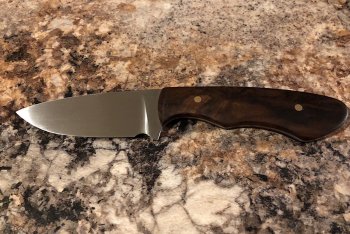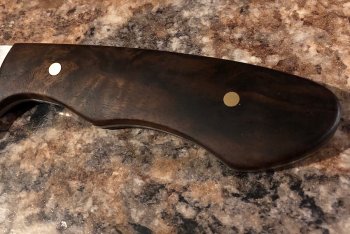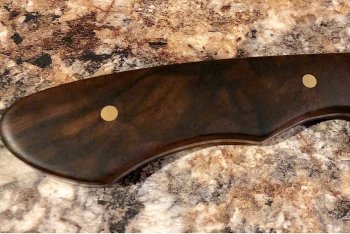Not the greatest photo, but I’m working on that.
A little custom hunter that I did, 3-3/4” blade, 8-1/2” OAL.
I learned quite a bit doing the handle in this one. I used an entirely new technique on the grinder and refined the shape with fine files before hand sanding. I also used a technique new to me for the finish. I followed to the letter, the technique used by a friend of mine for finishing “best” quality shotguns. It leaves a very nice finish, not to slick but smooth, and a very nice satiny sheen.


A little custom hunter that I did, 3-3/4” blade, 8-1/2” OAL.
I learned quite a bit doing the handle in this one. I used an entirely new technique on the grinder and refined the shape with fine files before hand sanding. I also used a technique new to me for the finish. I followed to the letter, the technique used by a friend of mine for finishing “best” quality shotguns. It leaves a very nice finish, not to slick but smooth, and a very nice satiny sheen.



